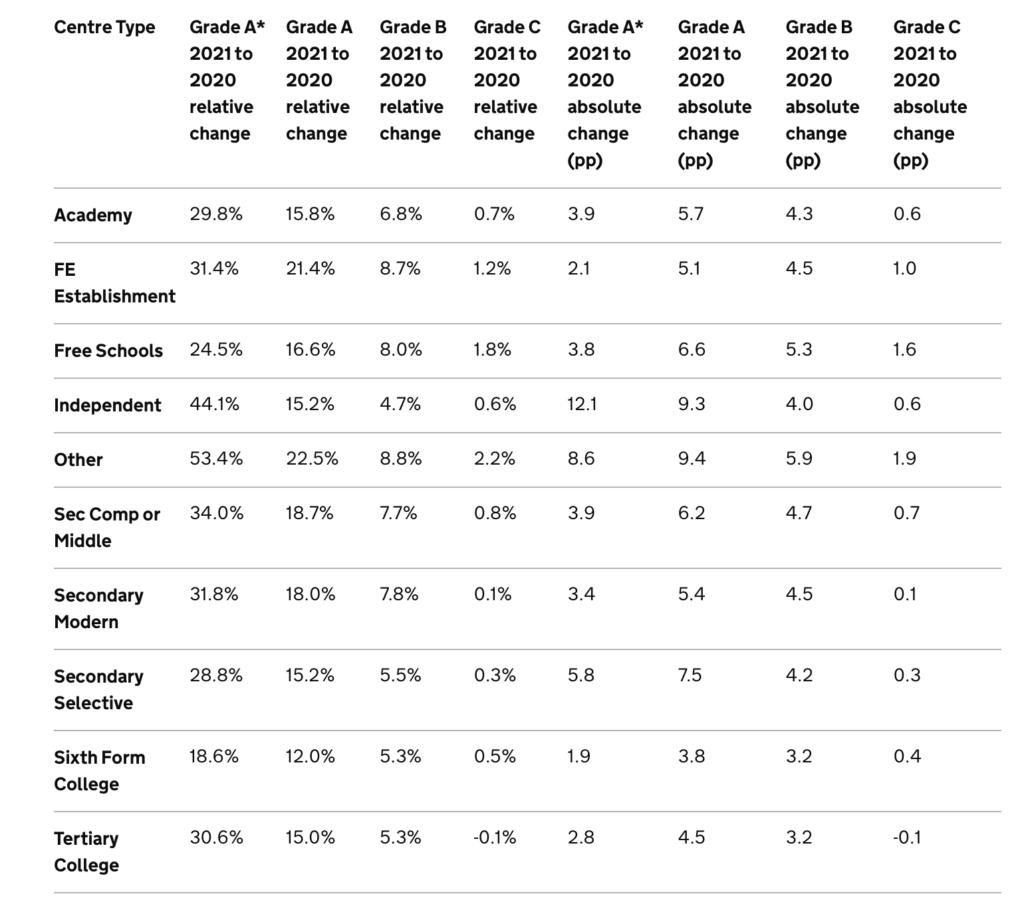A-level results day reveals growing inequality in education
Editorial Feature
A-levels results in England have shown the disparity between public and private institutions.

A-level results day on 10 August 2021 showed private schools experience a significant increase in A* marks. The inequality gap between private schools and public schools is widening, A-level results day showed.
In England, 70% of A-level grades for independent school students were A* or A. Whilst compared to 39% for comprehensive school students. The attainment gap with non-selective state schools grew even as others saw their grades rise.
In comparison with comprehensive secondary schools, today’s A grades growth in private schools is 50% and doubles that of pupils in sixth form schools. Statistics show downgrades disproportionately affect students from disadvantaged backgrounds revealing a growing inequality in education.
JCQ has published A-level results for summer 2021. Overall A level outcomes are higher at the top grades (A* to B) compared to 2020, and relatively stable at the lower grades (C to E.)
An examination of Ofqual’s statistics shows a more alarming picture of persistent and growing inequity in the educational system. The rise in achievement is not consistent across all demographics or educational environments. A large increase in A grades was seen in independent schools. While grades improved in all types of schools, fee-paying institutions showed the greatest improvement.
In response to the coronavirus (Covid-19) pandemic, the government stated in January 2021 that students studying Ofqual-regulated GCSE, AS, and A-level will be graded based on teacher assed grades. The conclusion of joint consultation between Ofqual and the Department for Education on alternative arrangements to summer examinations was revealed in February. Teachers utilised a variety of data to decide the grade at which their pupils performed.

Institutional inequality
Is it right that your A-level grades may be influenced by where you live, your background, and the school you attend?
The achievement gap for some groups of pupils expanded. While the number of BAME students, those on free school meals, and those from low-income regions obtaining the top grades improved, it was outpaced by their peers’ performance. The attainment gap has increased.
With regard to grades A or A*, in comparison with the relevant reference groups, there has been an increase of 1.43, 1,.2 and 1.39 percentage points amongst candidates from BAME comunities, free school meals candidates and those with an extremely high deprivation rate.
Many blame the government’s policies, a chaotic last-minute system and no ‘Plan B’ in place causing the gap between private schools and state schools to get bigger.
A level relative and absolute changes by centre type compared to 2020

Results have increased from 2020 for all types of institutions. The distribution of grades for students attending independent schools are centred around the top grades in typical years. Students attending independent schools in the upper grades are most likely to gain from a consistent increase in grades granted across all types of schools and colleges. Increased grades may have a smaller impact on other centre types because most of their applicants are grouped at the lower end of the grade range.
To see your company in any upcoming features we are arranging please email editorial@hurstmediacompany.co.uk







